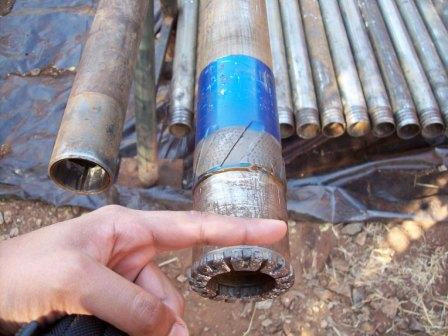How Geological Drilling Works
21.06.2008 To extract rock from hundreds of meters beneath the surface a rotating diamond studded drill bit is driven into the rock.
Hovedinnhold
This occurs at the end of a long chain of rods which are put down the hole as we drill deeper and produces a solid cylinder of rock core that is brought back to the surface.
The diamond drill bit is attached to the end of a hollow, cylindrical core barrel, which is in turn, screwed on to the end of a long chain of drill rods (like a series of drinking straws attached together). The entire system including assembled rods and the drill bit is rotated by the drill-rig head at surface. This causes the diamond drill bit to grind into and eat away at the rock right at the very end of the assembled drill stem, up to hundreds of meters beneath ground. During the Barberton Scientific Drilling project a range of different drill bits were tested and applied depending on the hardness and variable material properties of the rocks.
Photograph showing the inner drill tube (left), a diamond drill bit (in front of finger center) attached to the core barrel and a stack of steel drill rods (far right in background).
